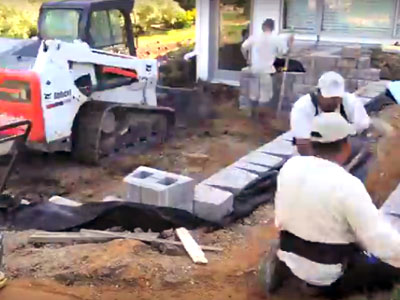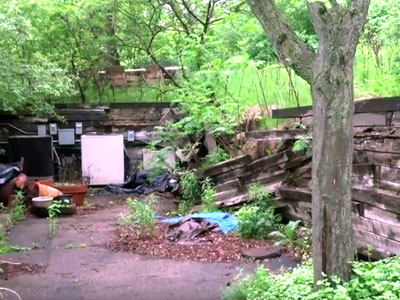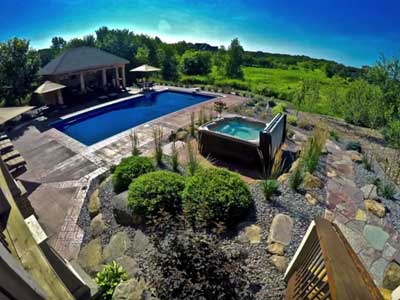Retaining Walls Timber Wood Design & Installation
O ne of the beauties of wood is that it is easy to use. Wood retaining walls lend a warm organic look to your landscape design, at a relatively low cost. There are three basic types of lumber used for walls, but to understand them, one must first consider that wood is an organic material subject to moisture, rot and termite attack where the wood comes into contact with soil that is naturally damp and a source of bacteria. This means that plain lumber is not a good choice, unless a wall is to be temporary.
Your best bet will be one of three materials, redwood, pressure treated fir, and used rail ties. Redwood has excellent rot and insect resistance, which explains why redwood trees live thousands of years. You benefit by redwood’s long life. A downside is that redwood is a soft, low-density material, so thicker lumber must be used to ensure a wall is strong enough to do the job. Rough redwood or construction grade heartwood lumber are the preferred choices for wall construction. Well-built, properly draining redwood retaining walls can last 20 years or more.
Pressure-treated lumber also is excellent for retaining wall construction because of its strength and hardness. Mills start with a hard, strong construction grade wood like Douglas fir, and then preservative chemicals are injected under pressure to limit the effects of insect and rot damage. Copper and arsenic compounds have been used in the past, but the Environmental Protection Agency recently banned them. A new chemical compound, known as ACQ reduces risks. The EPA says there is no need to worry about existing retaining walls, because there is no evidence that pressure treated lumber poses any significant risk.
Keep in mind that pressure treatment doesn’t extend all the way through the wood. When pressure treated boards are sawn, entry points are created for rot and insects to take hold. Pressure-treated fir walls must be properly constructed to prevent contact with soil and water. Even though pressure treated wood is slightly more expensive than redwood, walls can last longer, making these more economical to build.
Rail ties are incredibly versatile, and the fact you recycling them is a bonus. When railroads sell their old ties, disposal is an issue because they are often treated with creosote, an asphaltic product that prevents rot. Rich, dark and seasoned, you can stack them, make walkways, driveways and step-side planters, knowing these will hold up for years. Rail ties may run about the same cost as bricks or blocks, but construction labor savings will make them more economical in the long run. Plantings can accentuate their beauty, too. Consider fall-blooming Japanese windflower (Anenome japonica, zones 4-8) as a waterfall ground cover. They will grow to a height of three feet and, once established, will spread underground by bulbs.
Does the landscape around your residential or commercial property need improvement?
Tell us about your landscaping ideas, renovation plans, irrigation system or landscape design or installation requirements.
Call Maple Crest Landscape at (763) 478-2752.
Request a Quote
















